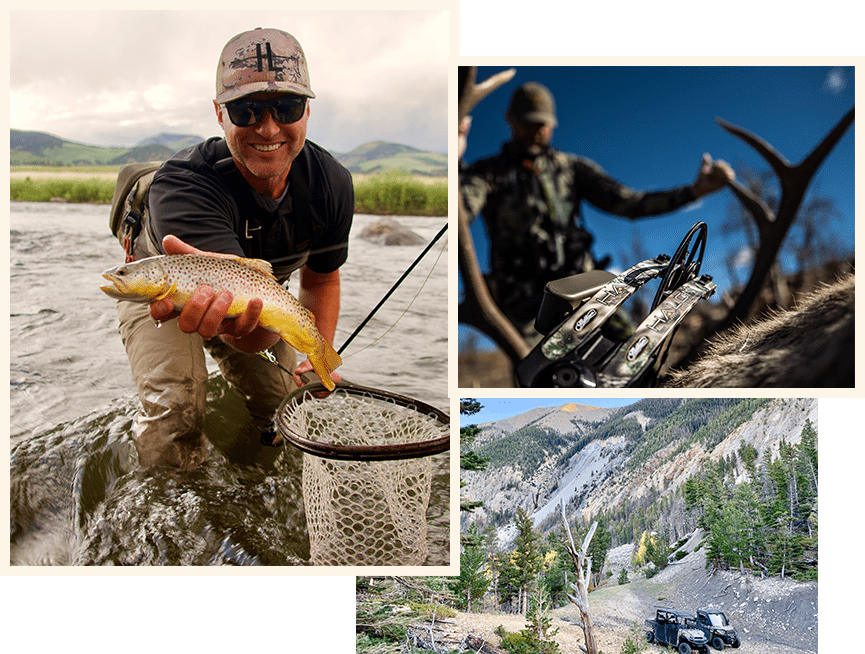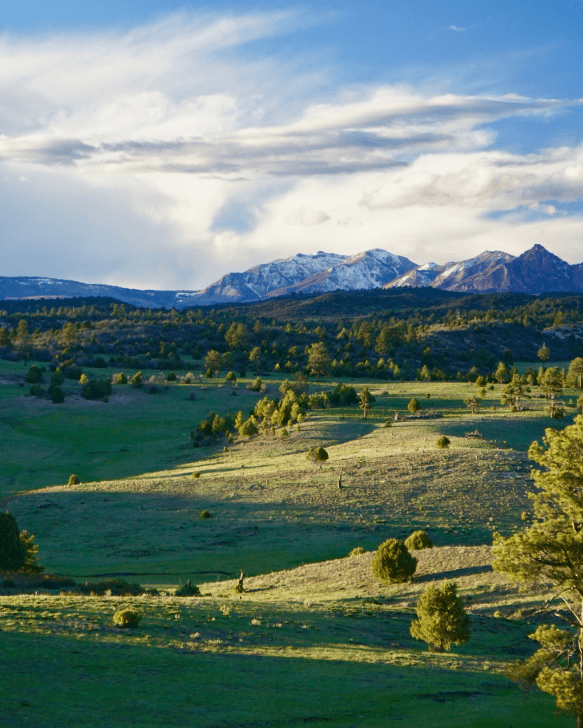Winter is over and now comes shed hunting season. Before going out into the field, we’ll tell you why regulators restrict shed hunting. We’ll also share a sampling of updated laws. If you stick with us ‘til the end of this post, you’ll see tips for successful shed hunts.
An increasing number of us look for bull elk and buck deer shed antlers after they’re shed. Let’s find out why the shed hunting 2022 season starts now.
How Deer and Elk Manage Wintertime
Let’s talk about why states restrict shed hunting. Laws govern elk and deer shed hunting in the mountain states. Most mountain ranches in Colorado seek to protect elk and deer habitat. It is valuable. Likewise with state and government agencies. They want to protect wildlife, especially during cold winters.
What’s happens in the winter? Stress caused by food scarcity and cold. Body weight is down. More animals die, especially fawn and calves.
So, we find mountain herds hunkering down to preserve strength. They forage close to the bedding areas. For example, bull elk and buck deer often seek out fields and resting in the brush at the edge. If they try to jump fences, however, their heavy racks often detach. Unless we own the farm or ranchland, we must ask permission to hunt on private property. Alternatively, we anticipate the beginning of shed antler season and follow the rules set for public lands.
Checking Laws Before Shed Hunting
Always know where you are. Laws covering deer and elk shed hunting vary across state lines and on public lands. One state may be more restrictive, another not. Be certain government entities allow elk or deer shed hunting before entering public lands. A simple search will bring up the parameters in any area of the Rocky Mountains. Violators can expect fines.
Know where you are. Always ask permission before entering private property or land.
Be careful, as laws do change. National parks, state parks, forest preserves and Wildlife Management Areas might forbid collecting artifacts, including antlers.
See below sample regulations in Colorado, New Mexico, Utah, Wyoming, and Montana.
COLORADO
Colorado prohibits shed antler hunting west of Interstate 25 from January 1 through April 30. In addition, to protect sage-grouse, shed hunts in Gunnison Basin (Management Areas 54, 55, 66, 67, and 551) are restricted May 1-15 from sunset to 10 am. No restrictions for private property.
NEW MEXICO
New Mexico does not require licenses and permits. The state does ask shed antler hunters to stay on the designated roads and trails. Registered ATVs must be compliant. Contact Game and Fish conservation officer if you want to collect any skulls.
UTAH
Utah requires shed hunters to take a course and carry a certificate to hunt between February 1 and April 15. Starting in 2022, shed hunters also need to take an ethics course.
WYOMING
From January 1 through April 30, Wyoming prohibits shed hunting on public land west of the Continental Divide. More efforts to protect southeastern Wyoming are ongoing.
Shed season opens at noon on May 1 on public lands. It continues daily beginning at noon.
Antlers and horns attached to skulls require permission to detach the head plus Interstate Game Tags from Wyoming Game and Fish law enforcement.
MONTANA
Prime shed-hunting season runs from mid-March through early June. Better yet, scout out the fields as the snow begins to recede between February 15 to March 15.
Montana State Parks prohibit collecting antler sheds. Depending on where you hunt, public recreation on Wildlife Management Areas opens at noon on May 15. Leash your dogs near deer and elk.
Shed Hunting Tips
The experts share tips that could go a long way towards making shed hunting 2022 the best season yet. Archer Brad Kaufmann and others explain ways to increase your success. Here’s a little overview.
- Always Scout
Scout out the habitat beginning in January and, of course, that is easier if you own a big ranch in Colorado or Wyoming property where the deer and the antelope play. In Montana, too, we see fields full of elk as they cross mountain ranches on both sides the Yellowstone River. If you don’t own one of them, stop and see if any owners need help with their deer shed hunt.
Regardless of you’re a landowner or simply out elk shed hunting for décor, know that shed begins earlier in warmer climates. So, start scouting during winter. You’re looking for trails leading to places where the deer winter. Trails show up more readily in snowy areas.
You’ll need a good eye for your treasure hunt. Binoculars, an essential instrument, can save you time and footsteps. They also help with scouting. Scan the fields up ahead and peer into the woods looking for trails, beds, and feeding areas. Or pull over to the side of the road and try spotting a shed in an adjacent field so you can ask the landowner’s permission to retrieve it. Never hesitate to ask a farmer or rancher if you can hunt their fields.
Deer and elk roam constantly, often ending up far from their autumn range by the end of winter. Think about animals warming themselves during winter. They’ll frequent the south side of slopes and stay far from the colder north slope. Also, check out “odd spots.” - Weather Timing
Now, let’s hunt. Timing is important. You’ll do better on rainy days and chilly days when snow is hard packed. Why? Antlers will be easier to see on cloudy days; they also spot the fresh sheds on top of the snow. Broken antlers look like branches. - Start with Easiest Places
Be ingenious. Start with obvious areas and move on. Our guide says to check trails close to parking areas, big swampy areas, islands midst a wetland. Why? Because desperate animals seek food under every nook and cranny. - Mobile Mapping
Use a Mobile Mapping app so you know where you’ve already searched, and you can see other places to search.
In addition, dress warm and bring a survival kit into unknown territory. Yes, and be sure to bring a pack frame or another way to haul your antlers out.
A growing population is adding pressure to create more rules for shed antler hunting. But, again, private properties will be exempt. Please respect wintering animals.
Shed Hunting for Recreation
If you own a large recreational or hunting ranch in a heavy wildlife corridor, you could allow shed hunting on your property. You don’t want antler barbs attacking tractor or ATV tires, right?
Collectors would love to help you remove the sharp antlers from fields and beds. In the current shed antler craze, people cash them in or use them for crafts, furniture building, health aids. The antlers have become a major business. Interestingly, the law considers shed antlers and shed horns to be “wildlife.” So do not lift skulls without permission.
You’ll even find people who just enjoy getting outside after a long winter season. Entire families have fun jumping into sturdy boots to tromp the fields. If they can ride in an ATV, even little ones relish the adventure. Just pack snacks and savor the delight.
How Deer and Elk Manage Wintertime
Laws govern shed hunting in the mountain states. Let’s talk about why states restrict shed hunting. Most mountain ranches in Colorado seek to protect elk and deer habitat. It is valuable. Likewise with states and government agencies who also want to protect wildlife, especially during cold winters.
What’s going on in the winter? Stress caused by food scarcity and cold. Body weight is down. More animals die, especially fawn and calves. People and vehicles add to the stress.
Mountain herds hunker down to preserve strength. The bull elk and buck deer often seek fields and rest in the brush at the edge of fields. If they try to jump fences, heavy racks often detach. But unless we own the farm or ranchland, we wait for shed antler season to begin.
Recreational and Working Ranches for Sale
Explore working and recreational ranches in the Rocky Mountains. Call Harrigan Land Company at 303-908-1101. Outdoorsmen Dave Harrigan and Hunter Harrigan know the value of Colorado ranches and farms and equivalent properties in New Mexico, Wyoming, Utah, Montana. And let us know how your shed hunting 2022 results!


